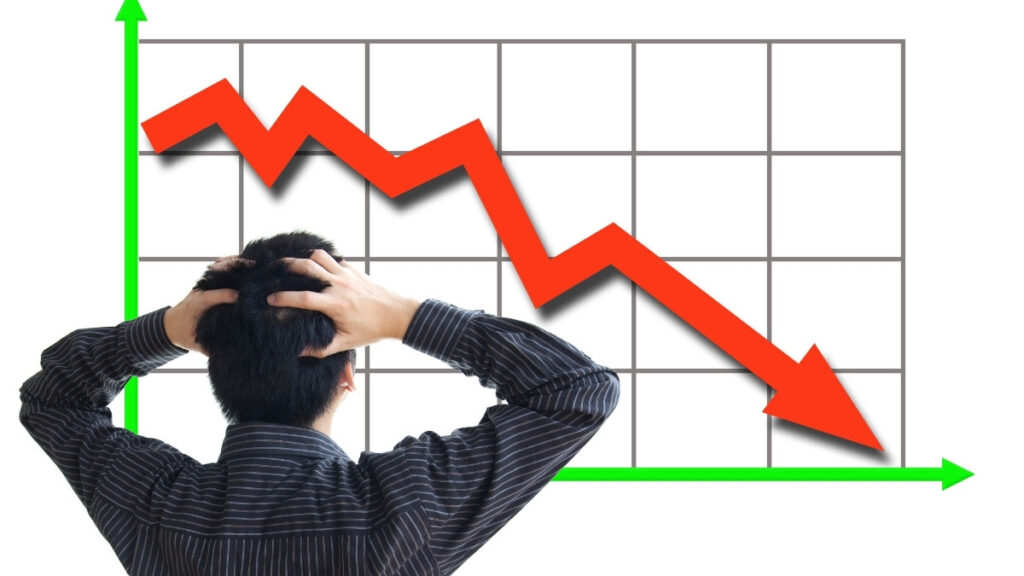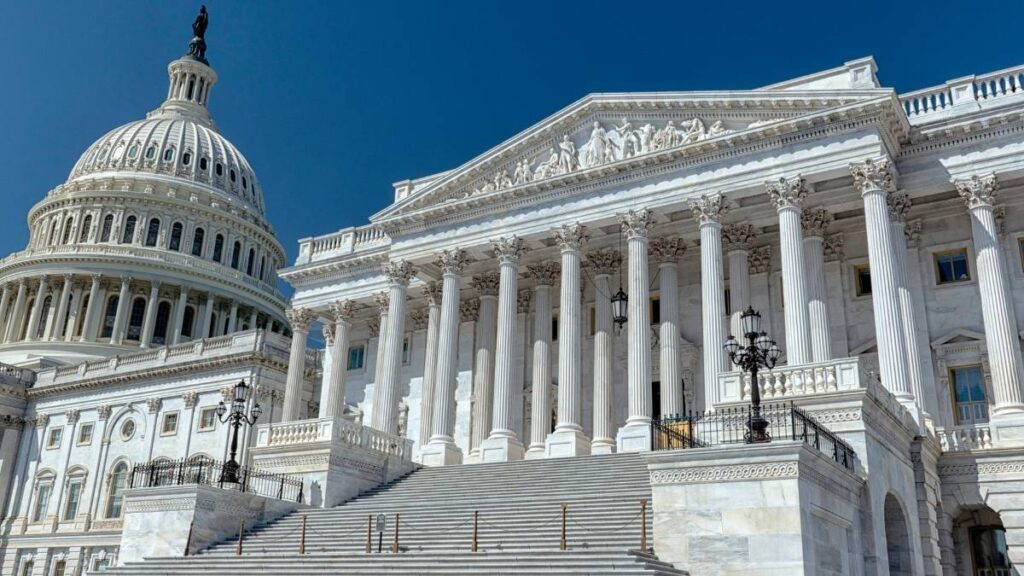The global financial landscape in 2025 is defined by a profound paradox centered on its linchpin: the U.S. dollar. On one hand, the greenback has endured one of its most challenging periods in recent memory, with the first half of the year marking its worst performance in over five decades.
This sharp depreciation has fueled a powerful narrative of decline, suggesting the dollar is finally “losing its mojo” after nearly 80 years of unquestioned supremacy. Proponents of this view point to a confluence of structural headwinds: the geopolitical weaponization of finance, mounting U.S. fiscal pressures, and a coordinated push by emerging powers to build an alternative, multipolar monetary order.
The Dollar’s Reign by the Numbers
While discussions of de-dollarization are growing, the US dollar’s grip on the global financial system remains formidable. Its dominance is evident across three critical areas: official foreign reserves, currency trading, and international trade invoicing.
Share of Global Reserves
The majority of foreign currency held by central banks worldwide is still in U.S. dollars, making it the ultimate safe-haven asset.
Involvement in FX Trades
The dollar acts as the primary vehicle currency, involved in nearly nine out of every ten global foreign exchange transactions.
Trade Invoicing
Over half of all international trade is billed in dollars, reducing friction and currency risk for global commerce.
II. Reading the Tea Leaves: A Deep Dive into Global Reserve Data

To accurately assess the dollar’s standing, one must begin with the official ledger of central bank preferences: the IMF’s COFER data. While this data provides the most direct view into how sovereigns store their wealth, its interpretation is fraught with nuance. A superficial reading can lead to dramatic but misleading conclusions, while a more careful analysis reveals a story of remarkable short-term stability set against a backdrop of a slow, glacial, long-term transformation.
The Headline Numbers: A Narrative of Decline
At first glance, the most recent COFER data paints a stark picture of a currency in retreat. At the end of 2024, the U.S. dollar’s share of allocated foreign exchange reserves stood at 57.79%. By the end of the first quarter of 2025, it had edged down slightly to 57.74%. However, the data for the second quarter of 2025 appeared to signal a dramatic acceleration of this trend. The dollar’s share plunged to 56.32%, a significant drop of 1.47 percentage points in a single quarter.

This sharp decline naturally feeds the “losing its mojo” narrative. A drop of this magnitude in just three months seems to provide concrete evidence that central banks are actively and aggressively divesting from dollar-denominated assets. This figure aligns with a broader trend previously highlighted by the IMF, which noted in 2021 that the dollar’s share had already fallen to a 25-year low. Taken at face value, the Q2 2025 data suggests this long-term erosion has entered a new, more rapid phase.
The Analyst’s Adjustment: Peeling Back the Valuation Effect
However, this headline figure conceals a critical distortion. The COFER survey reports all holdings in U.S. dollar terms. This methodology means that movements in exchange rates can create the illusion of active portfolio shifts where none occurred. For example, if the euro appreciates against the dollar, the dollar value of a central bank’s euro-denominated reserves automatically increases. This inflates the total value of reserves and, as a mathematical consequence, reduces the U.S. dollar’s percentage share, even if the bank did not sell a single dollar asset.
The first half of 2025 was marked by significant dollar weakness. The greenback depreciated by 7.9% against the euro and 9.6% against the Swiss franc in the second quarter alone. The IMF’s own analysis corrects for these powerful valuation effects to isolate the true extent of active buying and selling by reserve managers. When these exchange rate movements are factored out, the story changes dramatically. The IMF calculates that the dollar’s share in Q2 2025 would have decreased by a mere 0.12 percentage points, not the alarming 1.47 percentage points suggested by the raw data.
The Long View: A Two-Decade Erosion

While the short-term collapse was an illusion, the long-term decline is very real. Contextualizing the recent data within a multi-decade trend is essential. The dollar’s share of global reserves has been in a slow but unmistakable decline since peaking at over 71% in the year 2000.
The IMF confirms this gradual, structural shift. In a June 2024 analysis, it noted that over the preceding two decades, the value of the U.S. dollar has been broadly unchanged, yet its share of global reserves has fallen significantly. This indicates that central banks have, in fact, been gradually shifting away from the dollar over the long run.
Therefore, the most accurate interpretation of the COFER data is twofold. First, claims of a sudden, recent acceleration in de-dollarization are largely unfounded and based on a misreading of nominal data distorted by exchange rate fluctuations. Second, a genuine, slow-moving diversification away from the dollar has been underway for over 20 years. The decline is real, but it is a glacial process, not an avalanche.
Where Did the Dollars Go? The Rise of the “Nontraditionals”
Perhaps the most revealing insight from the long-term data is not just that central banks are diversifying away from the dollar, but where they are reallocating those funds. Strikingly, the primary beneficiaries of the dollar’s two-decade decline have not been the other “big four” currencies—the euro, Japanese yen, and British pound. While their shares have fluctuated, they have not captured a significant portion of the dollar’s lost ground.
Instead, the growth has occurred in the category of “nontraditional reserve currencies.” This basket includes the Australian dollar, Canadian dollar, Chinese renminbi, South Korean won, Singapore dollar, and Nordic currencies. An analysis of COFER data from Q1 2021 to Q1 2025 shows the share of the “other currencies” category growing steadily from 2.86% to 4.93%. This trend is facilitated by the development of new digital financial technologies, such as automated market-making, which have made it easier and cheaper for reserve managers to buy, sell, and hold these smaller currencies.
| Table 1: IMF COFER Snapshot (Q4 2024 – Q2 2025) |
| Currency |
| U.S. Dollar (USD) |
| Euro (EUR) |
| Chinese Renminbi (RMB) |
| Japanese Yen (JPY) |
| Pound Sterling (GBP) |
| Other Currencies |
| Source: Data compiled from IMF COFER releases. FX-adjusted figures as reported by the IMF. |
This table starkly illustrates the chasm between perception and reality. The nominal data for Q2 2025 suggests a dramatic flight from the dollar and a surge into the euro. However, the FX-adjusted data reveals an environment of remarkable stability, with only marginal active reallocation occurring across the major currencies. This provides the most direct, data-driven answer to the report’s central question: the dollar’s recent stumble was overwhelmingly a case of “catching its breath” due to valuation effects, not a sign that it is fundamentally “losing its mojo” at an accelerated pace.
III. The Case for “Losing Its Mojo”: Forces Driving De-Dollarization

While the short-term data may suggest stability, a powerful case can be made that the dollar’s slow decline is structural, irreversible, and driven by accelerating geopolitical and macroeconomic forces.
From this perspective, the gradual erosion seen in the COFER data is merely the visible tremor of a much deeper seismic shift. The argument rests on four pillars: the geopolitical imperative to find sanctuary from sanctions, a tangible flight to hard assets like gold, growing cracks in the U.S. domestic foundation, and the deliberate construction of alternative financial infrastructure.
The Geopolitical Catalyst: Weaponization and the Search for Sanctuary

The single most powerful catalyst for the de-dollarization movement has been the increasing use of financial sanctions by the United States as a tool of foreign policy. This trend reached a critical inflection point in 2022 with the freezing of approximately $300 billion of Russia’s foreign currency reserves. This unprecedented action sent a shockwave through the world’s central banking community. It fundamentally altered the risk calculus for any nation that might find itself at odds with U.S. policy, transforming the dollar from a neutral, reliable safe haven into a potential geopolitical weapon.
Consequently, reducing dependency on the dollar has evolved from a matter of economic preference—a desire for diversification or better yields—into an urgent matter of national security. For many countries, holding vast reserves in a currency that can be frozen or seized at the discretion of another government represents an unacceptable sovereign risk.
The Return to Gold: Central Banks’ Flight to Safety
The most tangible evidence of this search for a sanction-proof sanctuary is the historic surge in gold buying by the world’s central banks. Unlike foreign currency reserves held in accounts abroad, gold bullion can be physically stored within a country’s own vaults, placing it beyond the reach of foreign sanctions. This makes it the ultimate safe asset in a fragmented world.

The scale of this shift is staggering. According to the World Gold Council, central banks added a near-record 1,037 tonnes to their reserves in 2024, and this torrid pace continued into 2025 with an additional 290 tonnes acquired in the first quarter. Nations like China and Russia have been at the forefront of this trend, systematically increasing the share of gold in their official reserves. This institutional demand has been a primary driver of gold’s stunning rally in 2025, which saw prices surge past $4,000 an ounce.
The nature of this rally is particularly telling. It has occurred alongside a booming stock market, a highly unusual pattern that suggests the buying is motivated not by typical recessionary fears but by deep-seated anxiety about the long-term stability of the fiat currency system and the dollar’s role within it. As hedge fund manager Ken Griffin warned, the fact that global investors are starting to view gold as a safer bet than the U.S. dollar is a deeply concerning signal of eroding confidence.
Cracks in the Foundation: U.S. Fiscal Pressures and Policy Uncertainty
The push to de-dollarize is not solely an external phenomenon; it is also being fueled by mounting concerns about the sustainability of the United States’ own domestic economic policies. The “exorbitant privilege” of issuing the world’s reserve currency has long allowed the U.S. to run large deficits and accumulate debt at a lower cost than other nations. However, there is a growing belief among global investors that this privilege is being pushed to its limits.

The U.S. fiscal trajectory is a primary source of this anxiety. With a federal debt-to-GDP ratio exceeding 120%, a doubling of net interest expense over the past five years, and no credible long-term plan for fiscal consolidation, the U.S. financial position appears increasingly precarious. As Harvard economist Kenneth Rogoff has pointed out, annual interest payments on the U.S. national debt now surpass the country’s entire defense budget, a sobering milestone.
Building New Highways: Bilateral Trade and Alternative Payment Systems
The final component of the de-dollarization thesis is the deliberate, methodical construction of a parallel financial universe that can operate outside the dollar’s orbit. This is not about creating a single rival to supplant the dollar overnight, but rather about building a network of smaller, alternative “highways” for trade and finance that collectively reduce reliance on the dollar-based system.

This effort is most visible in the proliferation of bilateral and regional agreements to conduct trade using national currencies. The BRICS nations (Brazil, Russia, India, China, South Africa) and their new partners have been particularly active on this front. The Sino-Russian trade relationship is a case in point, with an estimated 55% of their bilateral commerce now settled in yuan, bypassing the dollar entirely. Similar arrangements are being pursued between India and Russia, India and the UAE, and across Southeast Asia.
IV. The Case for “Catching Its Breath”: The Dollar’s Fortress of Dominance
Despite the powerful forces driving de-dollarization, the case for the dollar’s continued supremacy remains formidable. This counterargument posits that the dollar’s recent weakness is cyclical, not structural, and that its foundational role in the global financial system is protected by a fortress of advantages that no challenger can currently hope to breach.

This “catch its breath” thesis is built on three core pillars: the profound weakness of all potential rivals, the dollar’s multi-layered dominance that extends far beyond its reserve currency status, and the unparalleled depth and liquidity of U.S. capital markets.
The TINA Doctrine: Why There Is No Viable Alternative (Yet)

The dollar’s most compelling strength may well be the inherent weaknesses of its competitors. This reality is often summarized by the acronym TINA: “There Is No Alternative.” A systematic evaluation of the main contenders reveals significant structural barriers that cap their global potential.
- The Euro: As the world’s second-most held reserve currency, the euro is the dollar’s most established rival. However, its ascent is fundamentally constrained by the incomplete nature of the European monetary union. The Eurozone lacks a single, unified sovereign bond market equivalent to the U.S. Treasury market.
- The Chinese Renminbi: While China’s economic might and growing share of global trade suggest the renminbi is a natural challenger, its internationalization is severely hampered by China’s own policy choices. The country maintains strict capital controls, meaning the renminbi is not freely convertible, a non-starter for a top-tier reserve currency.
Beyond Reserves: The Dollar’s Reign in Trade, Transactions, and Debt

Focusing solely on the dollar’s share of official reserves—its function as a store of value—provides a narrow and misleading picture of its true dominance. When one examines the dollar’s role as a medium of exchange and a unit of account, its position appears not just stable, but overwhelmingly powerful. The daily operations of the global economy are conducted in dollars to an extent that dwarfs its share of central bank vaults.
This distinction is critical. While sovereigns, driven by geopolitical concerns, are slowly diversifying their long-term savings (reserves), the private sector—corporations, banks, and investors—continues to rely on the dollar for its day-to-day business due to its unparalleled efficiency and network effects. Everyone uses the dollar because everyone else uses it. This creates a powerful, self-reinforcing inertia. The data bears this out unequivocally:
- Foreign Exchange Transactions: The dollar is on one side of an estimated 88% of all global foreign exchange trades, making it the undisputed vehicle currency of the world.
- International Trade Invoicing: Approximately 54% of the world’s exports are invoiced in U.S. dollars, a share far larger than the U.S. portion of global trade, demonstrating its preferred status as a unit of account.
- Global Payments: Despite years of de-dollarization talk, the dollar’s share of global payments routed through the SWIFT network has remained robust, standing at nearly 48% in July 2025. In contrast, the euro’s share was just 23% and the renminbi’s was below 3%.
- International Debt: The dollar remains the currency of choice for cross-border lending and borrowing. Its share of outstanding international debt securities has held steady, and it accounts for 40-50% of all cross-border bank loans.
| Table 2: The Dollar Dominance Dashboard (2025) |
| Metric |
| Official FX Reserves (Allocated) |
| Foreign Exchange Transactions |
| Export Invoicing |
| SWIFT Global Payments (Value) |
| International Debt Securities |
| Note: Shares for FX transactions sum to 200% as two currencies are involved in each trade. Other figures are approximate based on latest available data. |
Export to Sheets
This dashboard powerfully illustrates the dollar’s multi-layered dominance. While its position in reserves shows a slow erosion, its supremacy in the transactional plumbing of the global financial system is absolute.
The Bedrock: The Unrivaled Strength of U.S. Capital Markets
The ultimate foundation of this dominance lies in the structure of the U.S. financial system itself. The U.S. Treasury market is the deepest, most liquid, and most trusted financial market in the world. It is the global benchmark for pricing risk and the only market large enough to absorb the trillions of dollars in global savings seeking a safe haven. There is simply no other government bond market on earth that can offer a comparable combination of scale, credit quality, and ease of transaction.

This creates an inescapable reality for global capital. The entire architecture of modern finance, from the complex derivatives markets to the treasury operations of multinational corporations, is built upon a foundation of U.S. dollar assets and benchmarks. Dismantling this intricate system and rebuilding it around a new anchor currency would be a task of unimaginable complexity, cost, and risk—a process that would likely take decades, not years. This immense structural inertia acts as the final and most formidable defense of the dollar’s preeminent role.
V. The Emerging Landscape: A Multipolar Future?
The tension between the powerful drivers of de-dollarization and the dollar’s entrenched structural dominance suggests that the future of the international monetary system is unlikely to be a simple continuation of the past or a dramatic overthrow of the incumbent.

Instead, the most probable trajectory is a gradual evolution toward a more complex, fragmented, and multipolar currency landscape. This future will be shaped by the ambitions of rising powers, the inherent limitations of the dollar’s challengers, and the slow re-wiring of global trade and finance.
The BRICS Ambition vs. Reality
The expanded BRICS bloc, now comprising eleven full members with a host of additional partner countries, represents the most organized political force advocating for a less dollar-centric world. With a combined share of global GDP exceeding that of the G7 (in purchasing power parity terms) and representing nearly half the world’s population, the group possesses significant economic and demographic weight.

However, the headline-grabbing ambition of creating a single, common BRICS currency to challenge the dollar remains, for the foreseeable future, a “pipe dream”. The practical obstacles are immense. The bloc is a coalition of highly divergent economies, with vast differences in economic structure, inflation rates, monetary policy frameworks, and levels of development. Forging a monetary union among such a heterogeneous group—ranging from China’s $18 trillion economy to Ethiopia’s $156 billion economy—would require a level of political integration and policy coordination that is currently unimaginable.
A Tripolar Order? Assessing the Yuan, Euro, and Dollar Dynamic
Many economists and strategists envision the long-term evolution of the system as a “tripolar” order, anchored by the U.S. dollar, the euro, and the Chinese renminbi. In this scenario, no single currency would enjoy the hegemonic status the dollar has held, but these three would form the primary pillars of global trade and finance.
- The U.S. Dollar: Would likely remain the “first among equals.” Its role would be diminished from its current state, but the deep-seated structural advantages of its capital markets would ensure it remains the ultimate safe-haven asset and the primary vehicle for global transactions for the foreseeable future.
- The Euro: Would solidify its position as the clear number two, serving as the dominant currency within the European economic bloc and a significant vehicle for trade and reserves globally. However, its ability to truly rival the dollar for the top spot would remain contingent on the Eurozone achieving deeper fiscal and political integration, including the creation of a common safe asset.
- The Chinese Renminbi: Represents the greatest potential for change, but also the greatest uncertainty. Its future role depends almost entirely on the trajectory of domestic reforms in China. If Beijing proceeds with significant financial liberalization, opens its capital account, and enhances the transparency and predictability of its legal system, the renminbi has the potential to become a true global currency pillar, commensurate with China’s economic size. Without these reforms, it will likely remain a powerful but constrained currency, dominant in Asia-centric trade but failing to achieve the global trust necessary for top-tier reserve status.
This emerging landscape is not one of replacement, but of fragmentation. The world is moving from a unipolar currency system to a multipolar one. This transition implies a more complex and potentially less stable financial environment, where liquidity is divided across different systems and geopolitical blocs. For businesses and investors, this means navigating a world with greater currency volatility and increased operational complexity, where managing exposures and payments across multiple currency blocs becomes a key strategic challenge.
| Table 3: The Contenders’ Scorecard |
| Attribute |
| Economic Size (Share of Global GDP) |
| Financial Market Depth & Liquidity |
| Currency Convertibility |
| Rule of Law / Political Stability |
| Global Trust / Inertia |
| Overall Viability as Top Reserve Currency |
Export to Sheets
This scorecard systematically illustrates the foundation of the dollar’s continued dominance. While all three currency blocs possess the necessary economic scale, the dollar is the only one that scores highly across all the critical attributes required of a global reserve currency. The euro’s key weakness is its fragmented financial market, while the renminbi faces significant hurdles related to convertibility, market depth, and institutional trust.
VI. Conclusion: A Gradual Rebalancing, Not a Sudden Collapse
The evidence examined throughout this report leads to a nuanced but clear conclusion. The international monetary system is at a historic inflection point, but the outcome will be an evolution, not a revolution. The U.S. dollar is not on the verge of a sudden collapse, nor is it merely “catching its breath” before a return to its former, unassailable peak of dominance. Instead, the dollar’s role is being redefined within a global economy that is itself rebalancing toward a more multipolar structure.

The “mojo” of the dollar—its absolute share of global reserves and its psychological aura of inevitability—is indeed fading, continuing a slow, structural decline that began over two decades ago. This trend is being propelled by powerful and likely irreversible forces, most notably the geopolitical imperative for nations to insulate themselves from U.S. sanctions and growing concerns over the long-term sustainability of U.S. fiscal policy. The tangible flight of central banks to gold and the methodical construction of alternative trade and payment networks are not cyclical noise; they are the clear signals of a deliberate, long-term strategic shift.
Forces Shaping the Future
The dollar’s future hinges on a balance of countervailing forces. Several factors are actively undermining its dominance, while powerful structural advantages continue to provide foundational support. Understanding this push and pull is key to forecasting the future of global finance.
📉 Threats to Dominance (Headwinds)
-
›
Rising U.S. Debt
Persistently high government deficits and expanding national debt erode confidence in long-term economic management.
-
›
Geopolitical Weaponization
The frequent use of financial sanctions encourages countries to seek non-dollar alternatives for trade and reserves.
-
›
Emergence of Alternatives
Initiatives like Project mBridge and discussions of a BRICS currency signal a growing desire for a less dollar-centric system.
-
›
Trade Policy Uncertainty
A shift away from multilateralism and towards tariffs can reduce the dollar’s role as the default currency for global trade.
🏛️ Pillars of Support (Tailwinds)
-
›
Unrivaled Financial Markets
The U.S. Treasury market remains the largest, deepest, and most liquid bond market globally, offering unmatched safety.
-
›
Lack of a Viable Alternative
No other currency currently offers the same combination of stability, convertibility, and depth of associated financial assets.
-
›
Inertia and Network Effects
The global financial system is built on dollar infrastructure; switching would be immensely complex and costly for all parties.
-
›
Confidence in U.S. Institutions
Despite political turmoil, faith in the U.S. rule of law and the independence of the Federal Reserve provides a crucial backstop.
For strategic investors, corporate treasurers, and policymakers, this transition carries profound implications:
- Increased Complexity and Volatility: A multipolar currency system will inherently be more fragmented and volatile. Managing foreign exchange risk and cross-border liquidity will become more challenging as transactions increasingly occur across different currency blocs and payment systems.
- The Rise of Strategic Diversification: The rationale for diversifying away from a heavy concentration in U.S. dollar assets will strengthen. This applies not only to central banks but also to private investors and corporate treasuries, who will need to develop greater capabilities for transacting, hedging, and investing in a wider range of currencies, including the renminbi, the rupee, and others.
- The Enduring Role of Hard Assets: In a world of heightened geopolitical risk and questions surrounding the long-term value of all fiat currencies, tangible assets like gold are likely to play an increasingly important strategic role in portfolios as a hedge against both systemic financial risk and currency debasement.
Ultimately, navigating the coming era requires moving beyond the simplistic, binary debate of whether the dollar will “win” or “lose.” The future is not a zero-sum game but a complex re-shuffling of the global financial order. Success will belong to those who can understand and adapt to the nuances of this newly fragmented landscape, recognizing that the dollar’s reign is not ending, but its nature is fundamentally changing.

